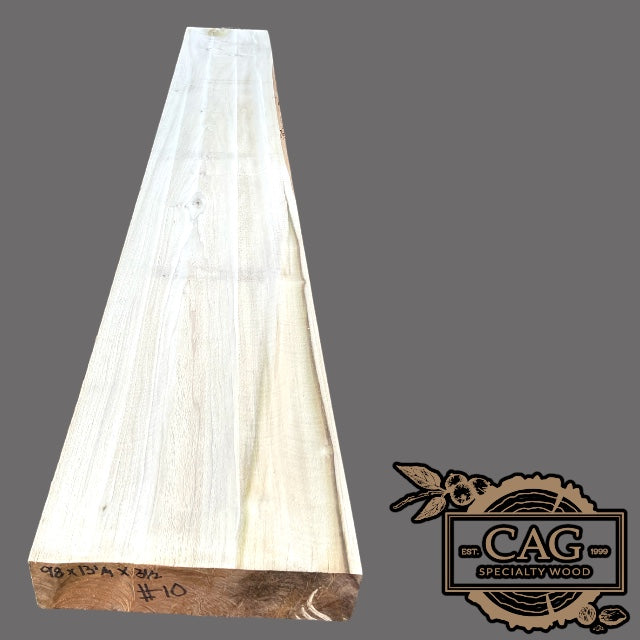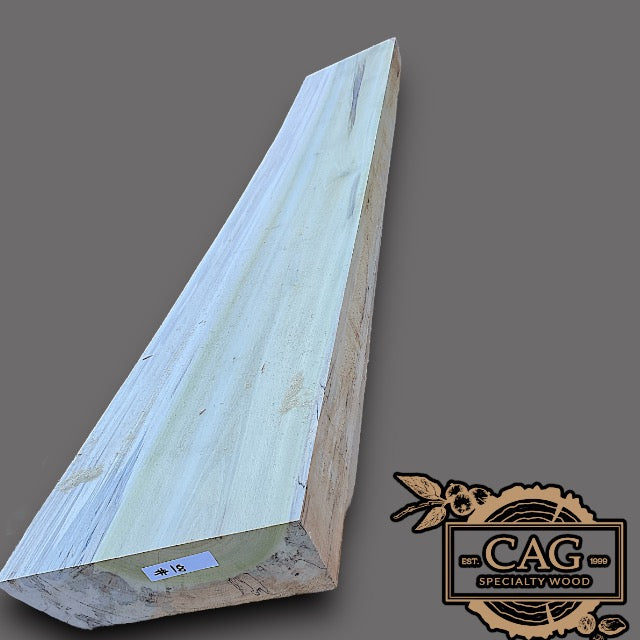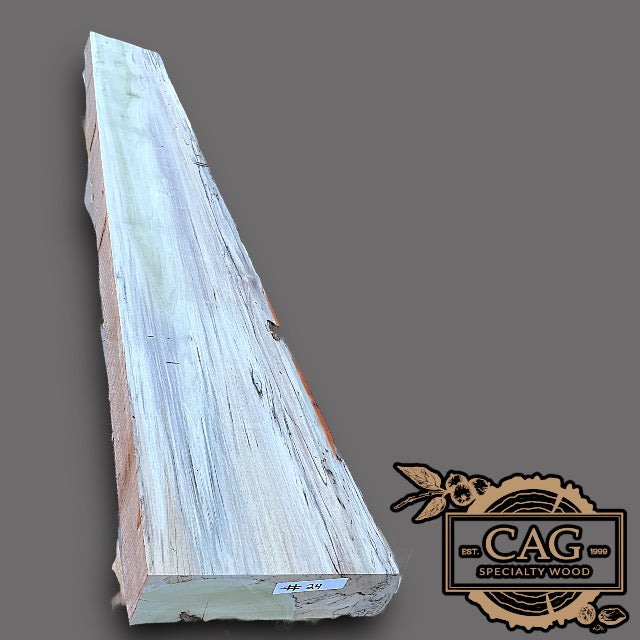







































Poplar Mantels
|
Common Name(s): Poplar, Tulip Poplar, Yellow Poplar Scientific Name: Liriodendron tulipifera Distribution: Eastern United States Tree Size: 130-160 ft (40-50 m) tall, 6-8 ft (1.8-2.5 m) trunk diameter Average Dried Weight: 29 lbs/ft3 (455 kg/m3) Specific Gravity (Basic, 12% MC): .40, .46 Janka Hardness: 540 lbf (2,400 N) Modulus of Rupture: 10,100 lbf/in2 (69.7 MPa) Elastic Modulus: 1,580,000 lbf/in2 (10.90 GPa) Crushing Strength: 5,540 lbf/in2 (38.2 MPa) Shrinkage: Radial: 4.6%, Tangential: 8.2%, Volumetric: 12.7%, T/R Ratio: 1.8 |
Color/Appearance: Heartwood is light cream to yellowish brown, with occasional streaks of gray or green. Sapwood is pale yellow to white, not always clearly demarcated from the heartwood. Can also be seen in mineral stained colors ranging from dark purple to red, green, or yellow, sometimes referred to as Rainbow Poplar. Colors tend to darken upon exposure to light.
Grain/Texture: Poplar typically has a straight, uniform grain, with a medium texture. Low natural luster.
Endgrain: Diffuse-porous; small pores in no specific arrangement, numerous; solitary and radial multiples of 2-3; tyloses occasionally present; growth rings distinct due to marginal parenchyma and noded rays; rays not visible without lens; parenchyma banded (marginal).
Rot Resistance: Heartwood is rated as being moderately durable to non-durable; susceptible to insect attack.
Workability: Very easy to work in almost all regards, one of Poplar’s only downsides is its softness. Due to its low density, Poplar can sometimes leave fuzzy surfaces and edges: especially during shaping or sanding. Sanding to finer grits of sandpaper may be necessary to obtain a smooth surface.
Odor: No characteristic odor.
Allergies/Toxicity: Although severe reactions are quite uncommon, Poplar has been reported as an irritant; usually most common reactions simply include eye, skin, and respiratory irritation, as well as asthma-like symptoms. See the articles Wood Allergies and Toxicity and Wood Dust Safety for more information.
Pricing/Availability: Among the most economical and inexpensive of all domestic hardwoods. Poplar should be affordably priced, especially in the Eastern United States where it naturally grows.
Sustainability: This wood species is not listed in the CITES Appendices or on the IUCN Red List of Threatened Species.
Common Uses: Seldom used for its appearance, (except in the case of Rainbow Poplar), Poplar is a utility wood in nearly every sense. It’s used for pallets, crates, upholstered furniture frames, paper (pulpwood), and plywood. Poplar veneer is also used for a variety of applications: either dyed in various colors, or on hidden undersides of veneered panels to counteract the pull of the glue on an exposed side that has been veneered with another, more decorative wood species.
Comments: Poplar is one of the most common utility hardwoods in the United States. Though the wood is commonly referred to simply as “Poplar,” it is technically not in the Populus genus itself, (the genus also includes many species of Cottonwood and Aspen), but is instead in the Liriodendron genus, which is Latin for “lily tree.” The flowers of this tree look similar to tulips, hence the common alternate name: Tulip Poplar.
Poplar Mantels
Poplar Mantel #1 - 100"x12"x3.75"
4050 Old Cornelia Hwy
Gainesville GA 30507
United States
Wood Calculator Section
Need Help Figuring out how much you need ?
One Board foot = 144 Cubic Inches
Example: If you need a piece of wood 12 inches wide, 1 inch thick and 24 inches long, that is equal to 2 board feet.
12 inches x 1 inch x 24 inches = 288 inches. 288/ 144 = 2 board feet


